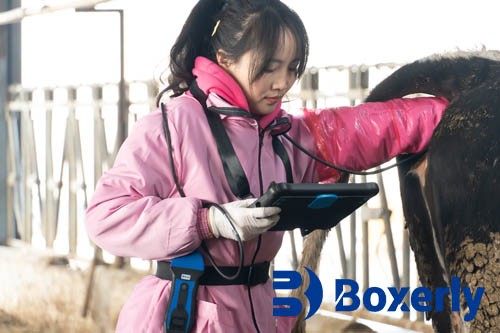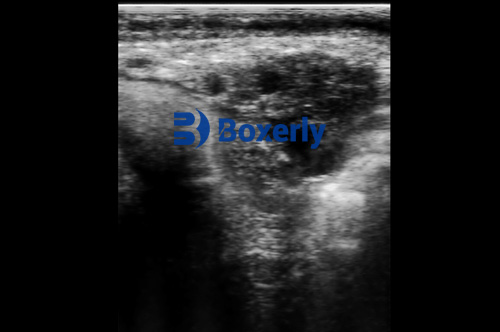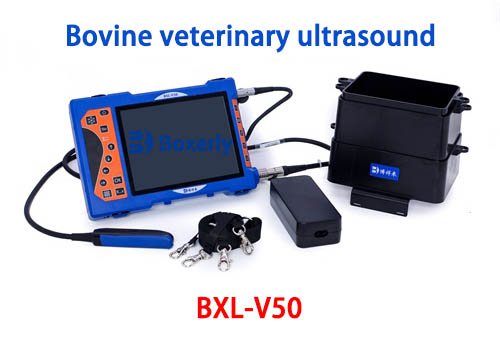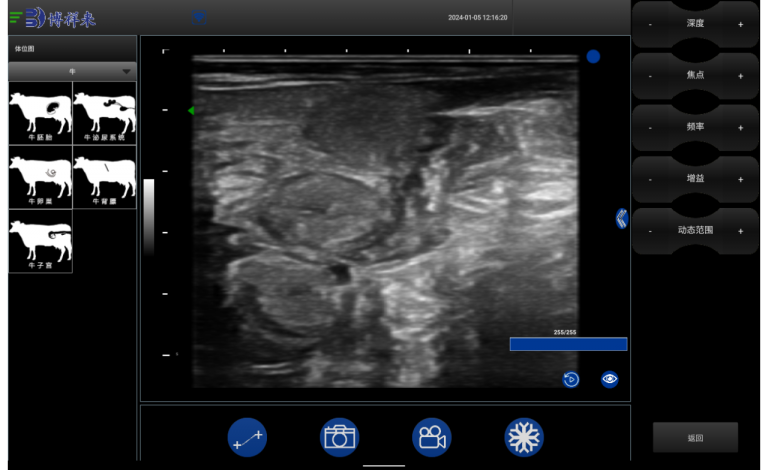BXL Ultrasound Veterinary for Cows: Revolutionizing Cattle Health Diagnostics
In modern veterinary practices, technology plays a vital role in improving animal health and ensuring the welfare of livestock. One such technological breakthrough is the BXL ultrasound veterinary system, specifically designed for large animals like cows. This advanced diagnostic tool is transforming cattle healthcare by providing non-invasive, accurate, and timely results. With its powerful imaging capabilities, the BXL ultrasound for cows is becoming a must-have tool for veterinarians and farmers to monitor cattle health, detect pregnancies, and diagnose various internal conditions effectively.

In this article, we will delve into the features, benefits, and applications of the BXL veterinary ultrasound system for cows, and how it is enhancing cattle health diagnostics.
What is the BXL Ultrasound Veterinary System for Cows?
The BXL ultrasound veterinary system for cows is a specialized diagnostic tool designed to offer high-resolution imaging for assessing the health of cattle. Unlike traditional diagnostic methods that often require invasive procedures, ultrasound technology uses sound waves to create detailed images of the internal structures of animals. This allows veterinarians to observe conditions such as pregnancy, internal organ health, musculoskeletal issues, and even fetal development without the need for surgery or sedation.
The BXL ultrasound for cows is equipped with advanced features that make it ideal for on-farm use, large animal clinics, and mobile veterinary practices. Its wireless capabilities, portable design, and real-time imaging ensure that veterinary professionals can perform efficient and accurate diagnostics in the field, on-site, or in the clinic.

Key Features of BXL Ultrasound Veterinary for Cows
1. High-Resolution Imaging for Accurate Diagnostics
The BXL ultrasound veterinary system for cows offers high-resolution imaging that provides clear and detailed visuals of an animal’s internal structures. With clear images of organs such as the uterus, liver, kidneys, and heart, veterinarians can identify abnormalities, infections, and other issues that may not be visible through external examination. This precision imaging helps with early detection, allowing for timely intervention and improved cattle health management.
2. Wireless and Portable Technology
The BXL ultrasound for cows operates with wireless technology, allowing it to send real-time images directly to mobile devices like smartphones, tablets, or laptops. This wireless feature eliminates the need for cumbersome cables and wires, providing greater mobility and flexibility in the field. Whether on a farm, in a barn, or during a mobile veterinary visit, the BXL ultrasound system is easy to transport and set up, making it ideal for veterinarians who need to diagnose cattle in remote or rural areas.
3. Non-Invasive and Stress-Free
Unlike other diagnostic procedures that may require invasive techniques or sedation, ultrasound is a non-invasive method that is generally less stressful for animals. The BXL ultrasound system can be used to examine a variety of internal conditions, from pregnancy checks to liver function assessments, all without the need for cutting or surgery. This makes it ideal for routine health checks, pregnancy monitoring, and musculoskeletal assessments, ensuring minimal disruption to the cow’s well-being.
4. Real-Time Results for Quick Decision-Making
With the ability to capture real-time images, the BXL veterinary ultrasound system allows veterinarians to make immediate diagnostic decisions. This is particularly valuable for pregnancy detection, fetal health monitoring, and injury assessments, where rapid intervention can prevent further complications or improve outcomes. Real-time imaging helps save time, especially in situations where quick decisions are essential for the animal’s health.
5. Affordable and Cost-Effective Solution
Traditional ultrasound systems can be costly, making them less accessible for smaller veterinary clinics or farms. The BXL ultrasound veterinary system for cows offers a more affordable solution without sacrificing image quality or diagnostic capability. Its cost-effectiveness makes it accessible to a wider range of veterinary professionals, from mobile vets to large-scale farms, enabling them to provide high-quality care without breaking the bank.

Benefits of BXL Ultrasound for Cows
1. Improved Pregnancy Detection and Management
One of the most common applications of the BXL veterinary ultrasound system for cows is pregnancy detection. Early pregnancy diagnosis is essential for managing breeding schedules and improving herd management efficiency. The ultrasound allows veterinarians to detect pregnancy as early as 30 days, giving farmers the ability to plan for calving and ensure the health of both the cow and the calf. Additionally, fetal health monitoring helps identify potential complications, allowing for proactive care if any issues arise during pregnancy.
2. Enhanced Health Monitoring and Disease Prevention
Regular ultrasound exams provide valuable insights into the overall health of the cow. By using the BXL ultrasound system, veterinarians can assess the health of internal organs like the liver, kidneys, and lungs. Early detection of conditions such as infections, tumors, or fluid buildup allows for prompt treatment, preventing more severe issues from developing. This early intervention can significantly reduce veterinary costs and improve overall herd productivity by preventing disease outbreaks.
3. Minimized Stress and Risk to Animals
Since the BXL ultrasound system is non-invasive, it minimizes the stress placed on the cow during diagnostic exams. Traditional methods such as blood tests or invasive procedures can be uncomfortable for animals, leading to increased stress and longer recovery times. Ultrasound, on the other hand, is a relatively comfortable and low-risk procedure, which is especially important when dealing with pregnant cows, calves, or nervous animals.
4. Improved Fertility Management
Ultrasound can be used not only for pregnancy detection but also for monitoring ovarian health and estrus cycles in cows. This is essential for fertility management, as it helps veterinarians identify non-pregnant cows, determine optimal breeding times, and detect reproductive issues such as ovarian cysts or uterine infections. This leads to improved breeding success rates, reduced time to conception, and more efficient herd management.
5. Musculoskeletal Injury Diagnosis
Another important use of the BXL ultrasound system for cows is diagnosing musculoskeletal injuries. The ultrasound can help assess joint issues, ligament injuries, tendon damage, or bone fractures that may not be visible through external examination. Early diagnosis and treatment of musculoskeletal injuries help prevent more serious conditions and improve the mobility and productivity of affected cows, particularly in high-performance or working cattle.

Applications of BXL Ultrasound for Cows
1. Pregnancy Detection and Fetal Health Monitoring
The ability to detect pregnancy in cattle as early as 30 days is a significant advantage for farmers. The BXL veterinary ultrasound allows for quick, accurate pregnancy diagnosis, enabling farmers to plan calving seasons and improve herd management. Additionally, fetal health monitoring helps ensure that calves are developing properly, and any complications can be identified early.
2. Routine Health Checkups
The BXL ultrasound system is perfect for performing routine health checks on cattle, assessing the health of internal organs such as the heart, liver, lungs, and kidneys. Regular monitoring of these organs ensures that any underlying issues are detected before they become more severe, promoting better overall health and reducing the need for costly treatments later.
3. Injury Assessment and Rehabilitation
In large herds, musculoskeletal injuries such as limb fractures, joint pain, or ligament strains are common. The BXL ultrasound system helps veterinarians diagnose these injuries early and develop a treatment plan for quicker recovery. This is particularly beneficial for dairy cows, beef cattle, or working cattle that rely on their mobility for productivity.
4. Fertility and Reproductive Health Management
Ultrasound technology is indispensable for fertility management in cows. By monitoring the reproductive organs, veterinarians can determine the optimal time for breeding, diagnose reproductive disorders, and track estrus cycles. This leads to better breeding outcomes and improved herd productivity.





